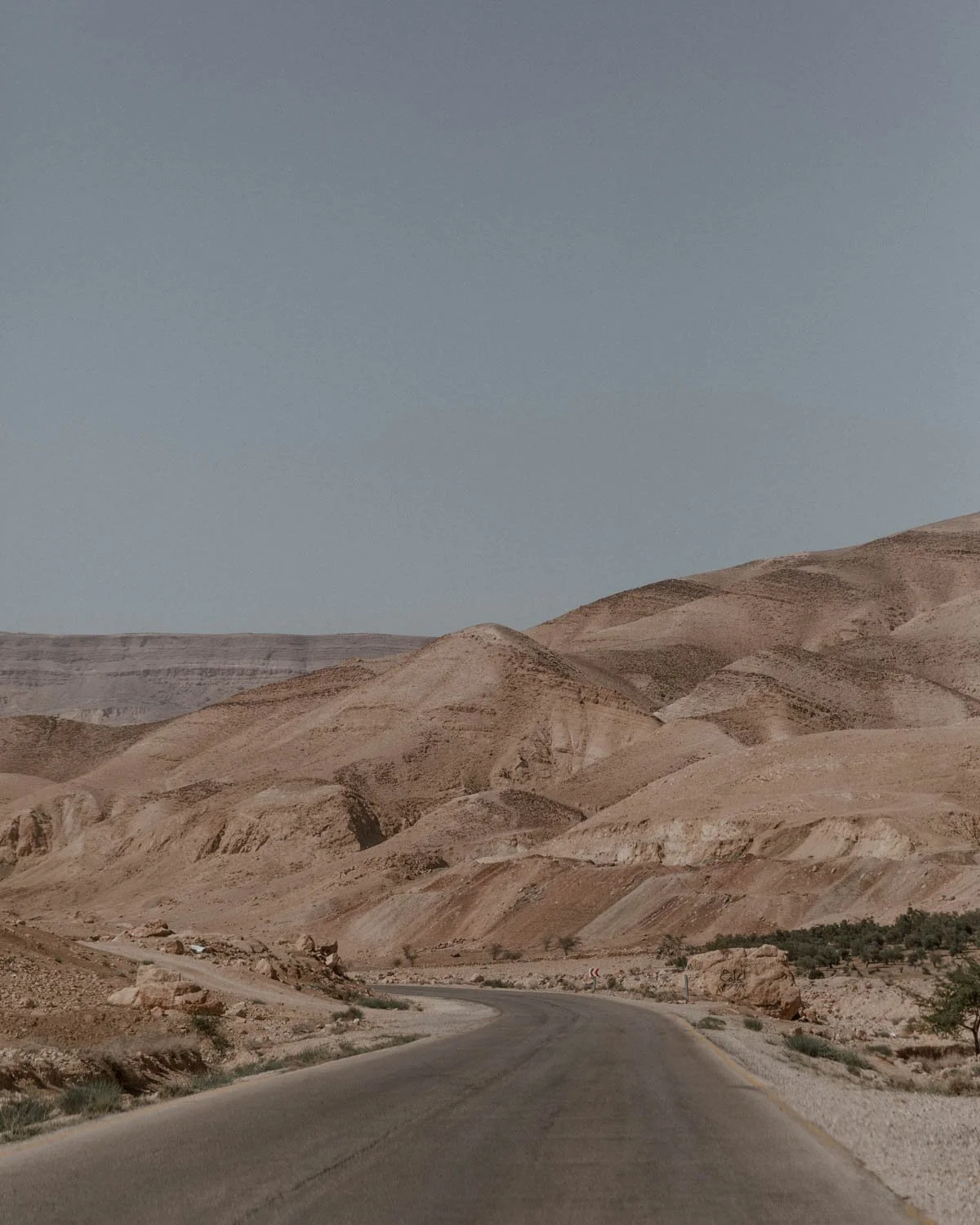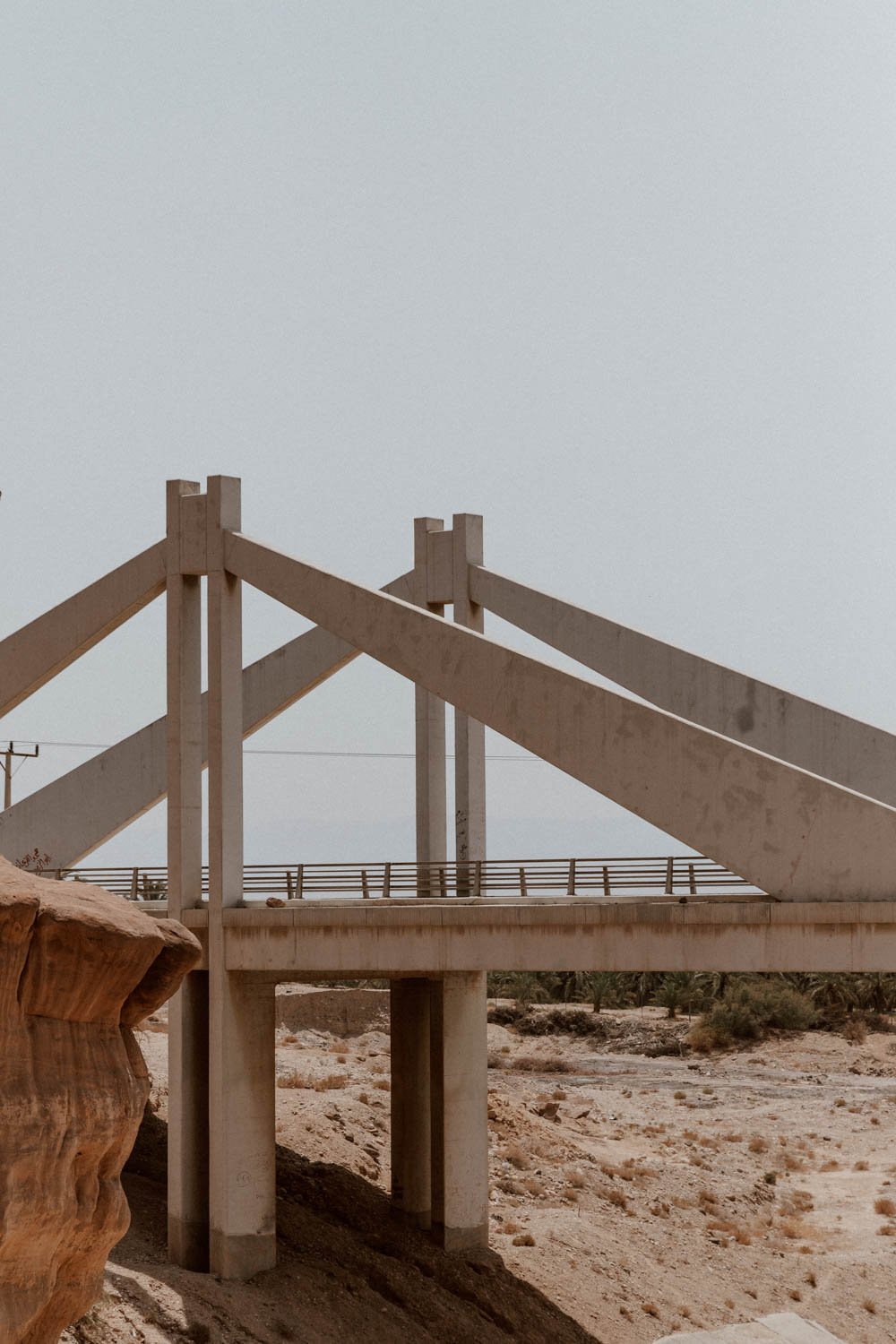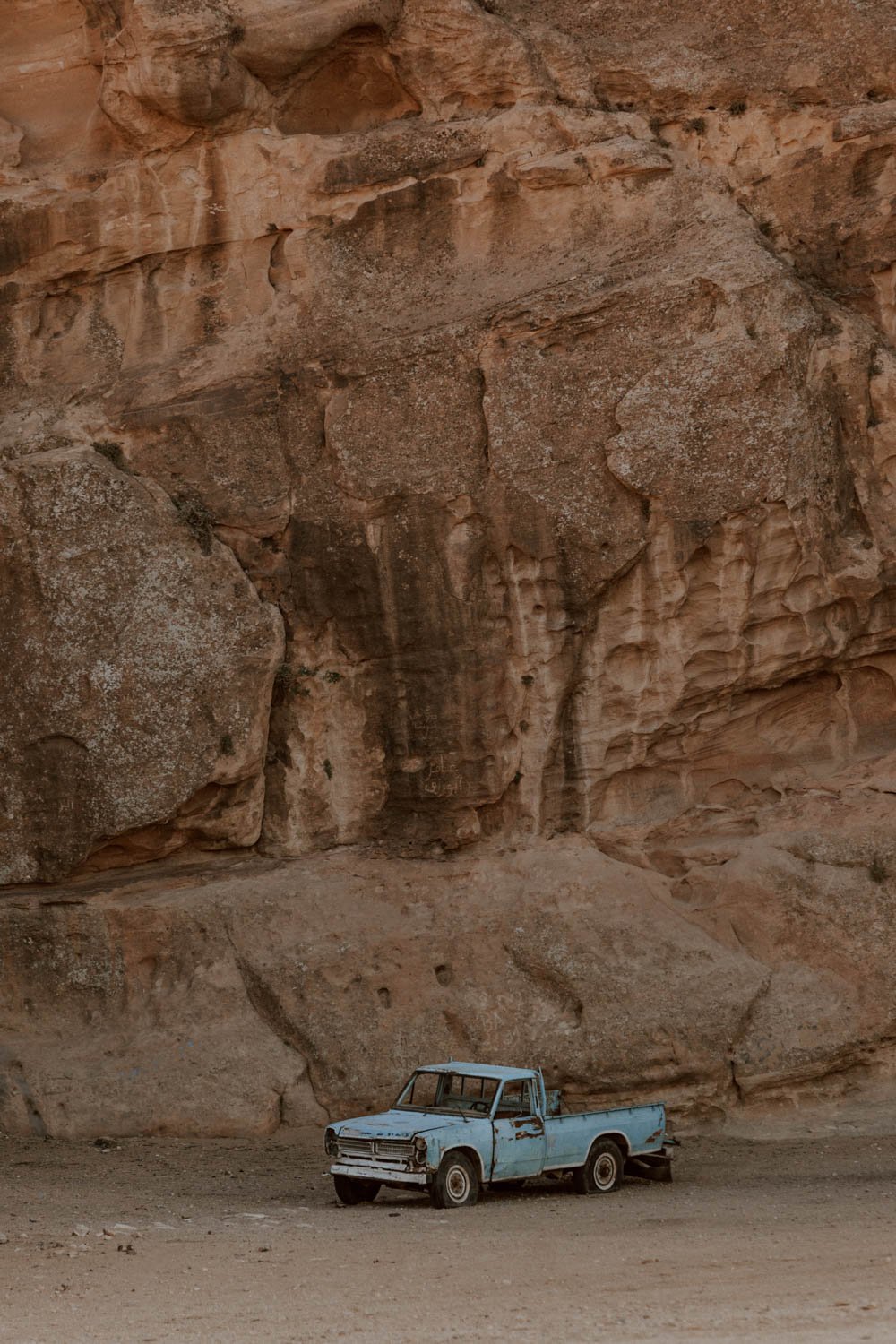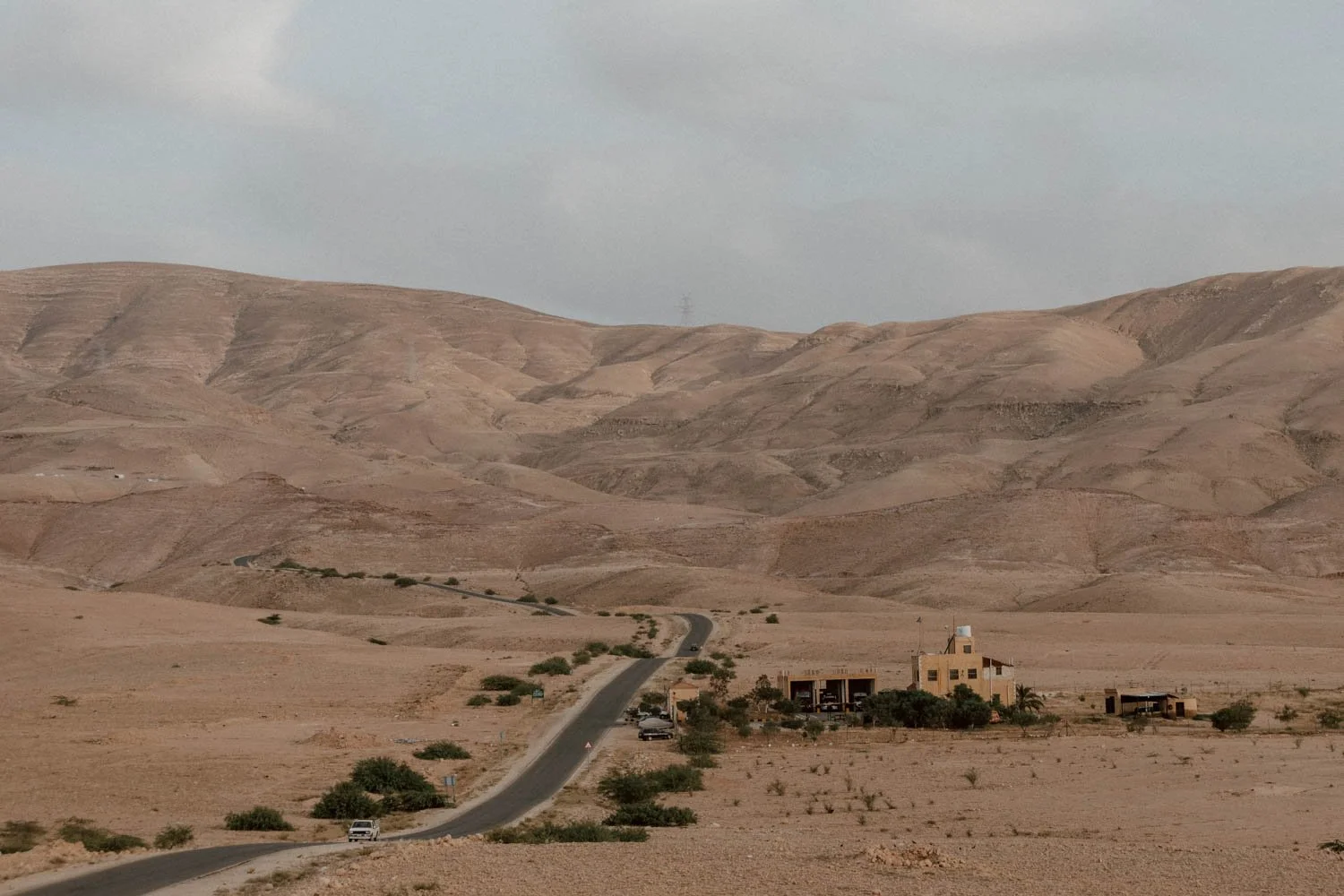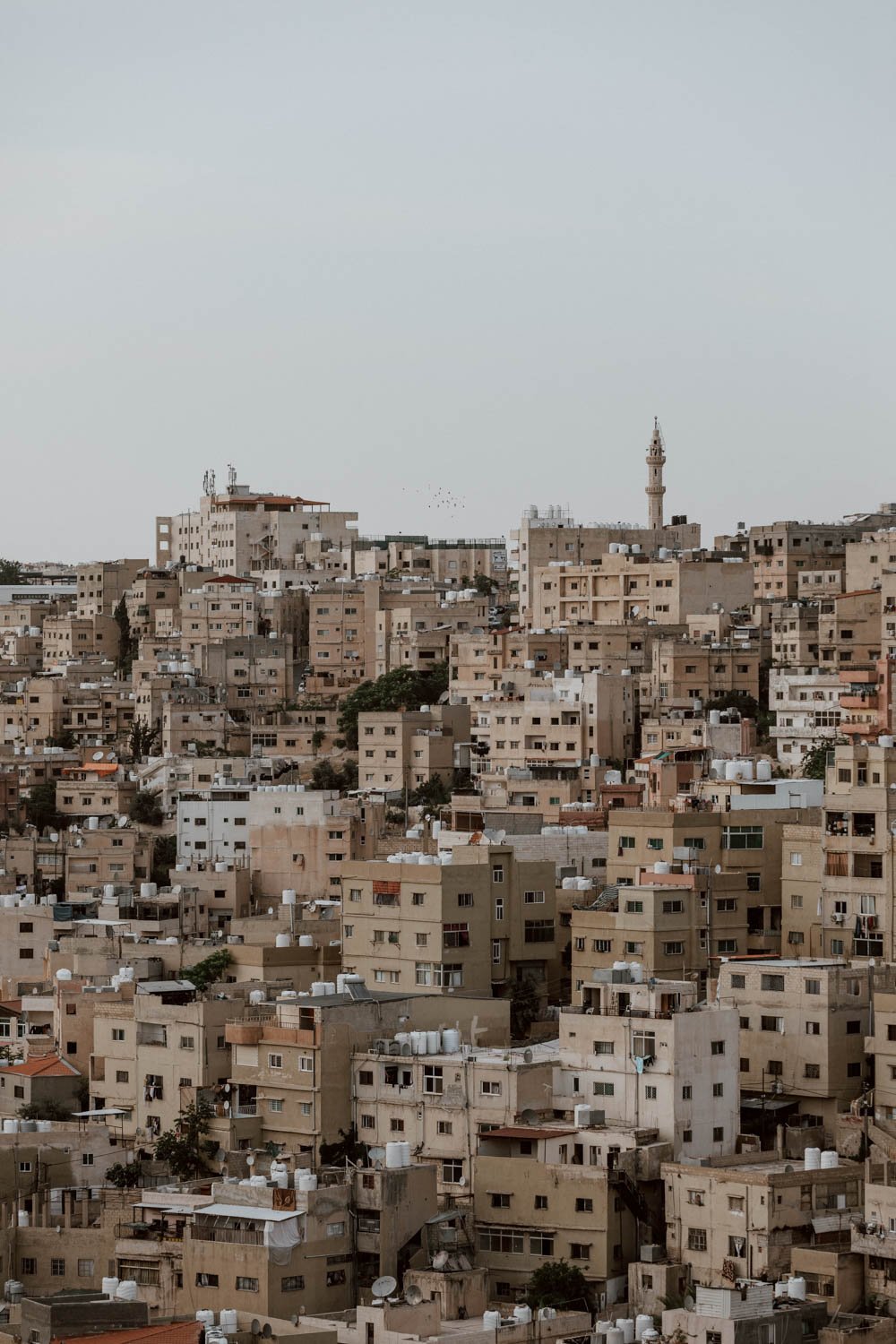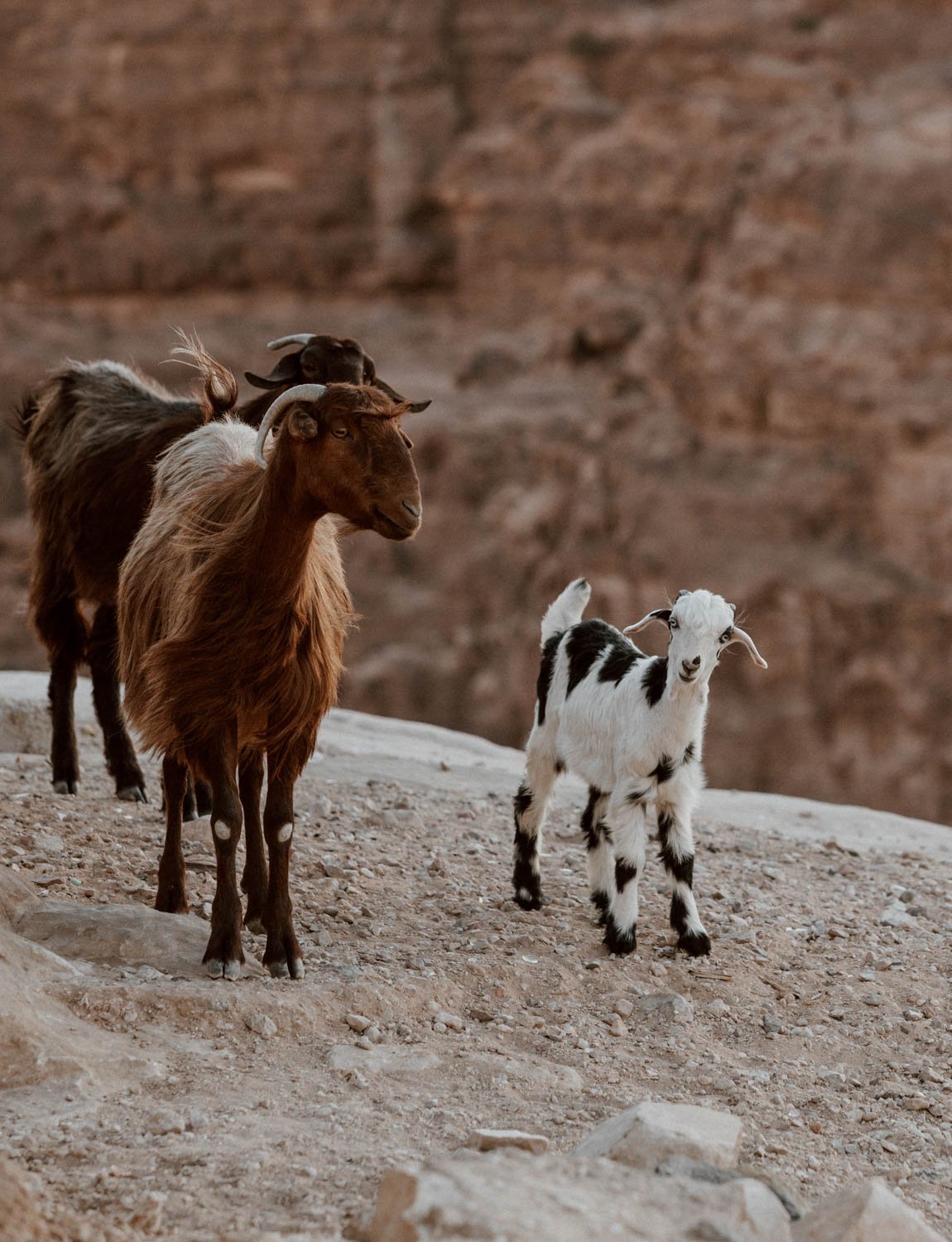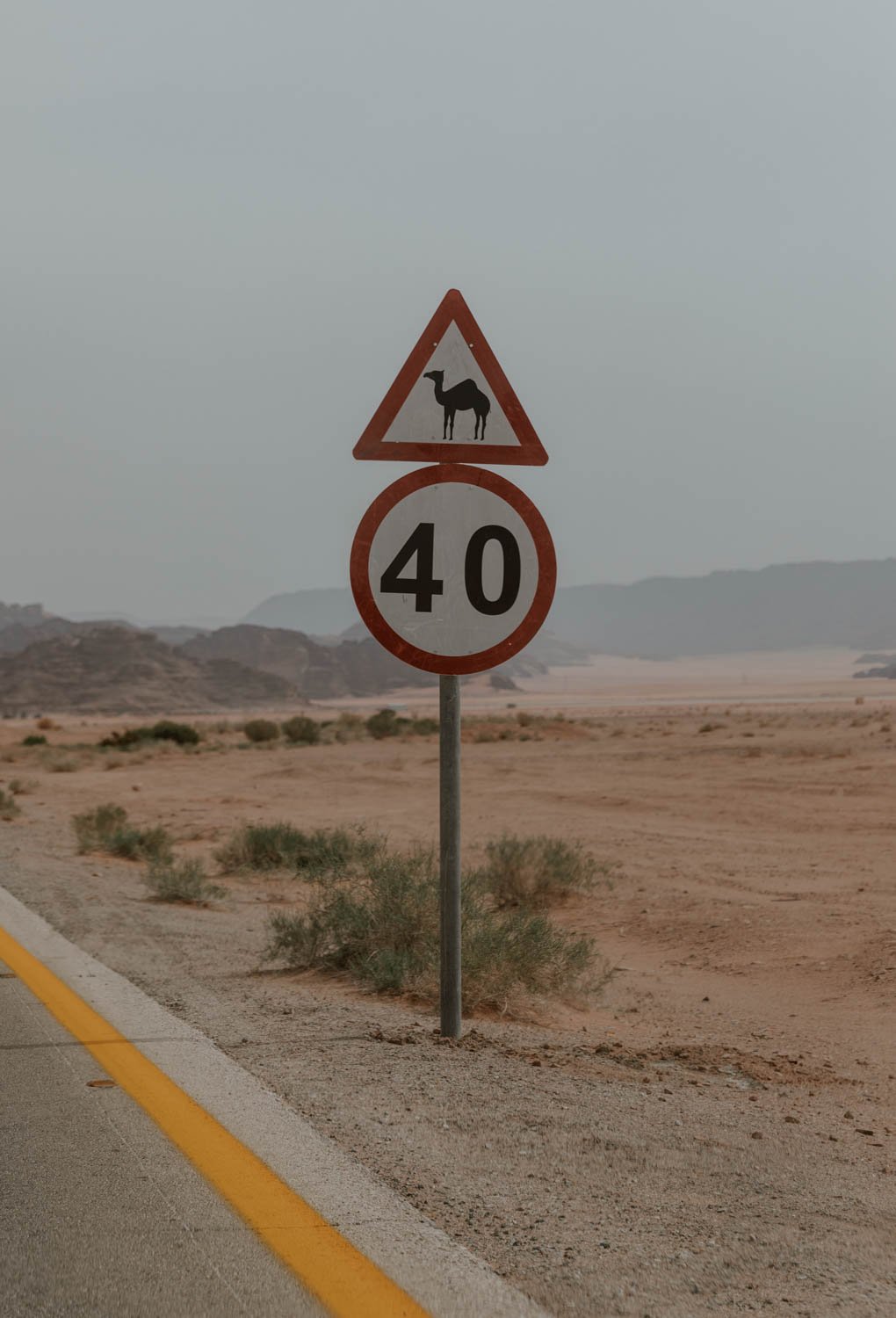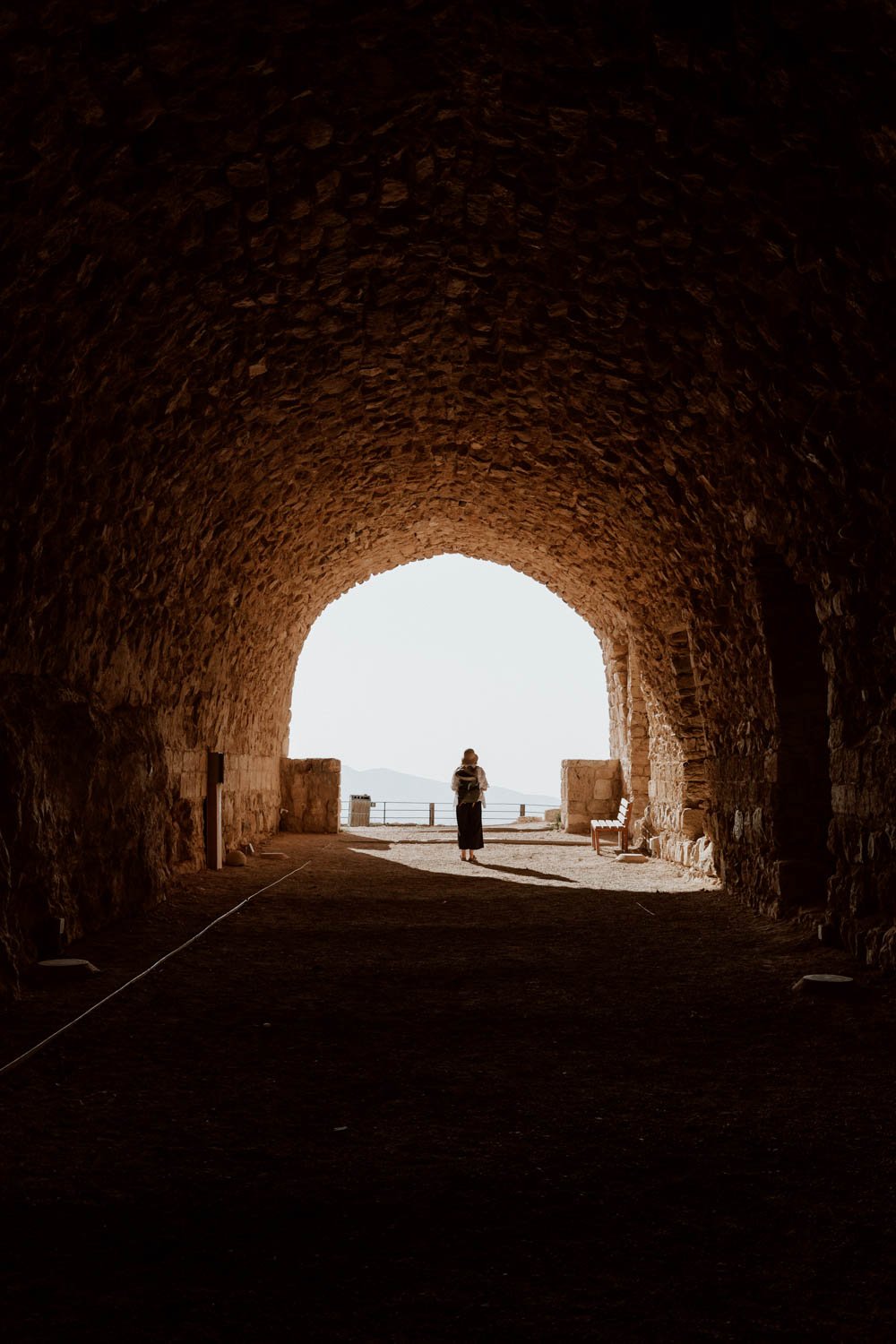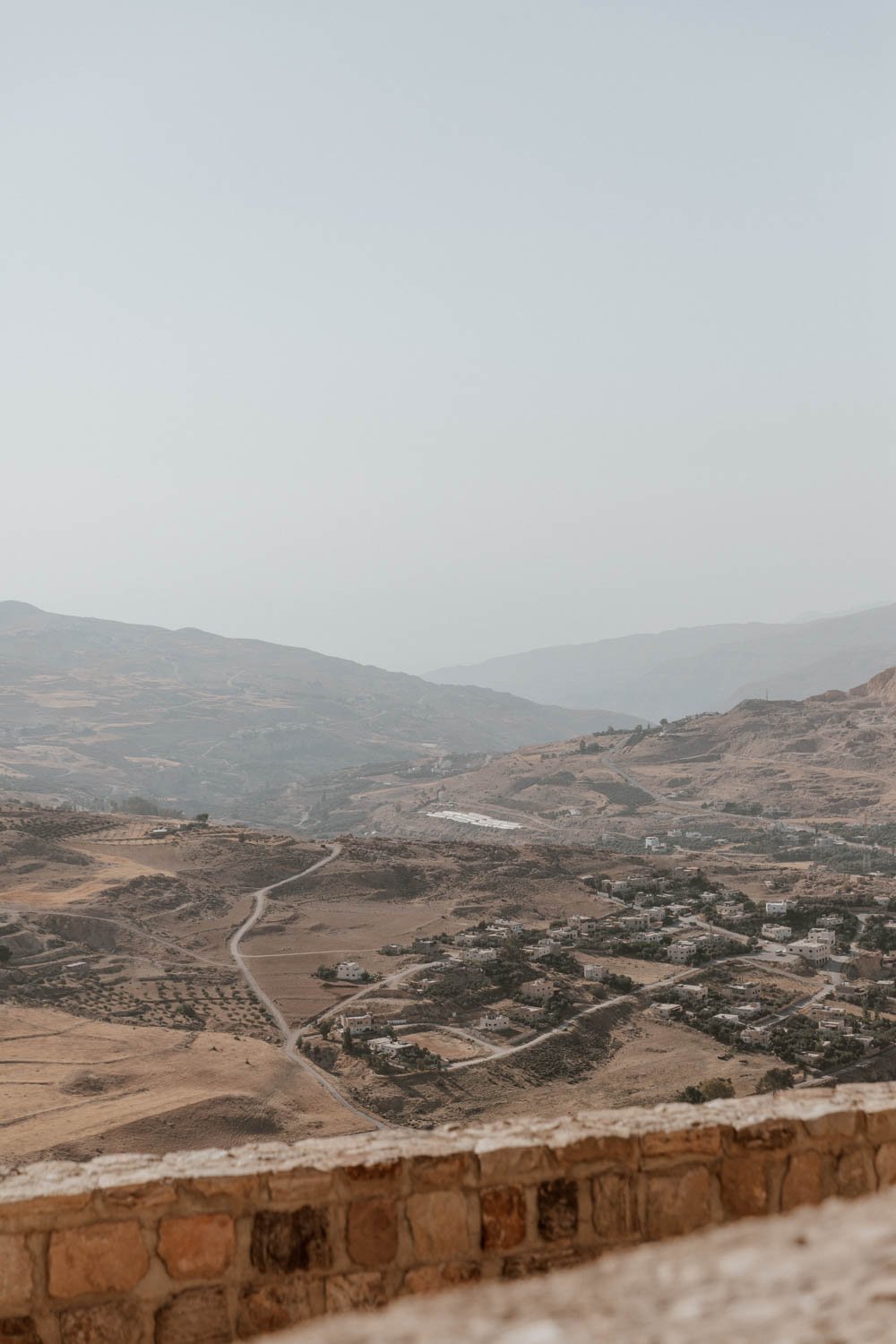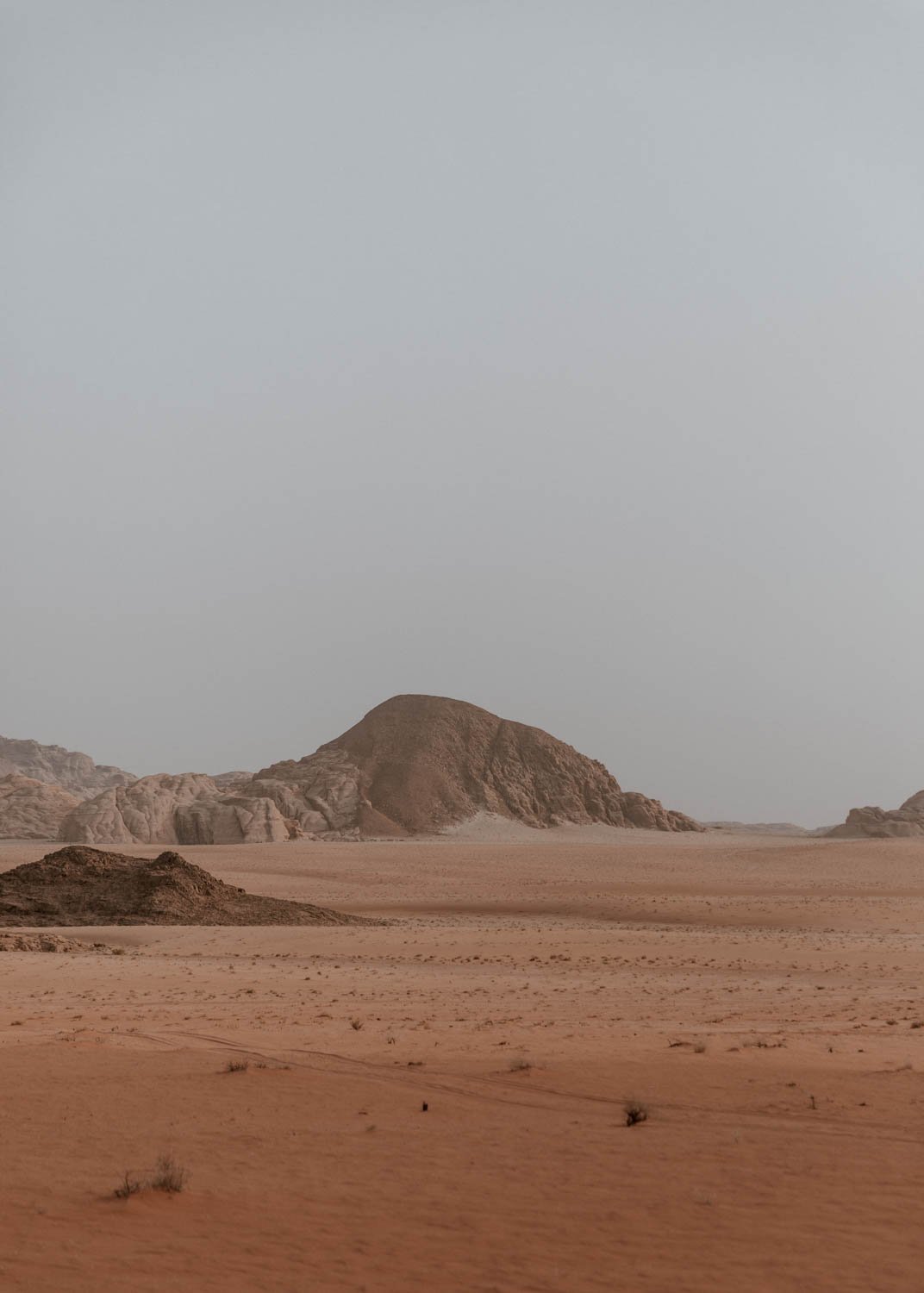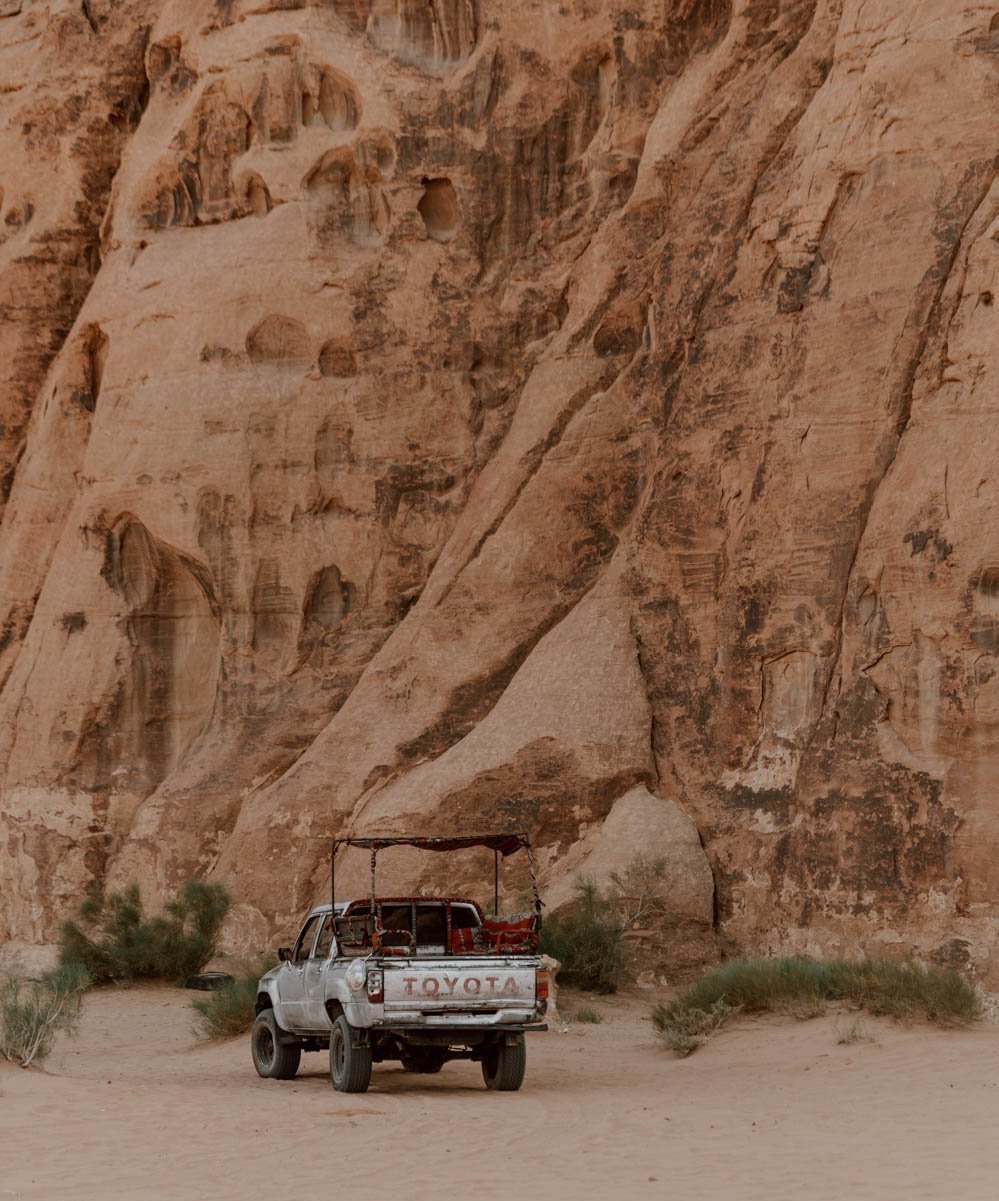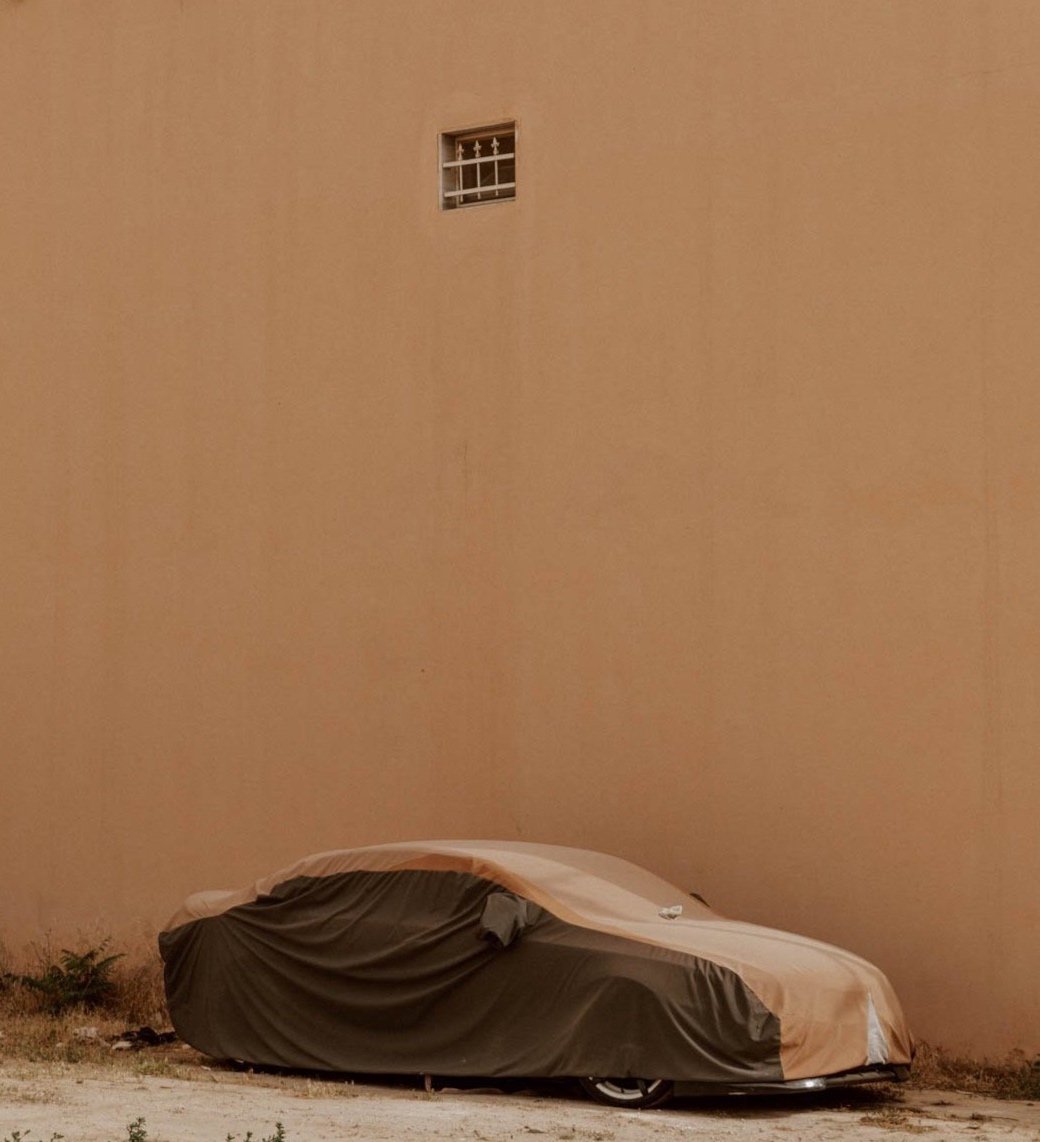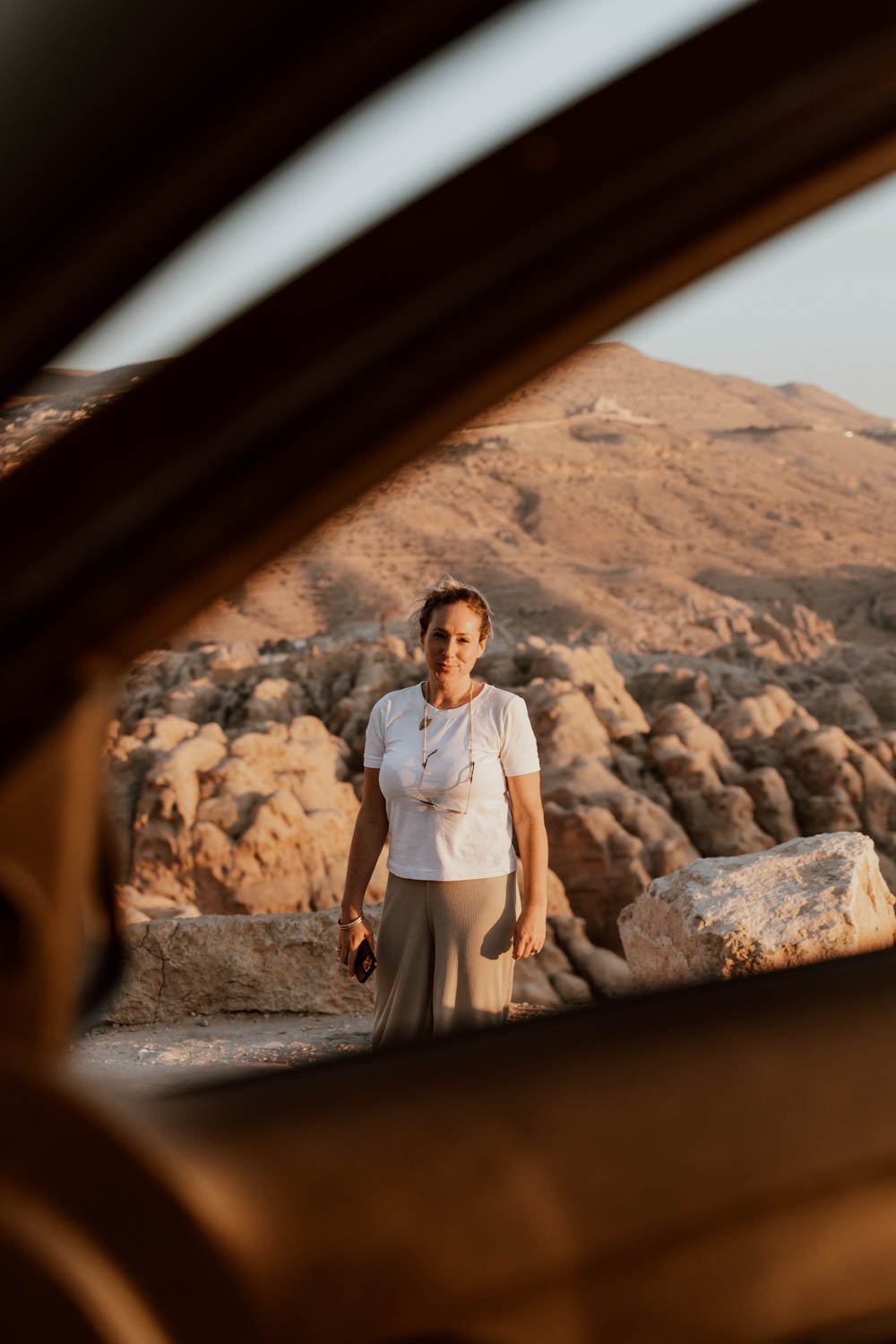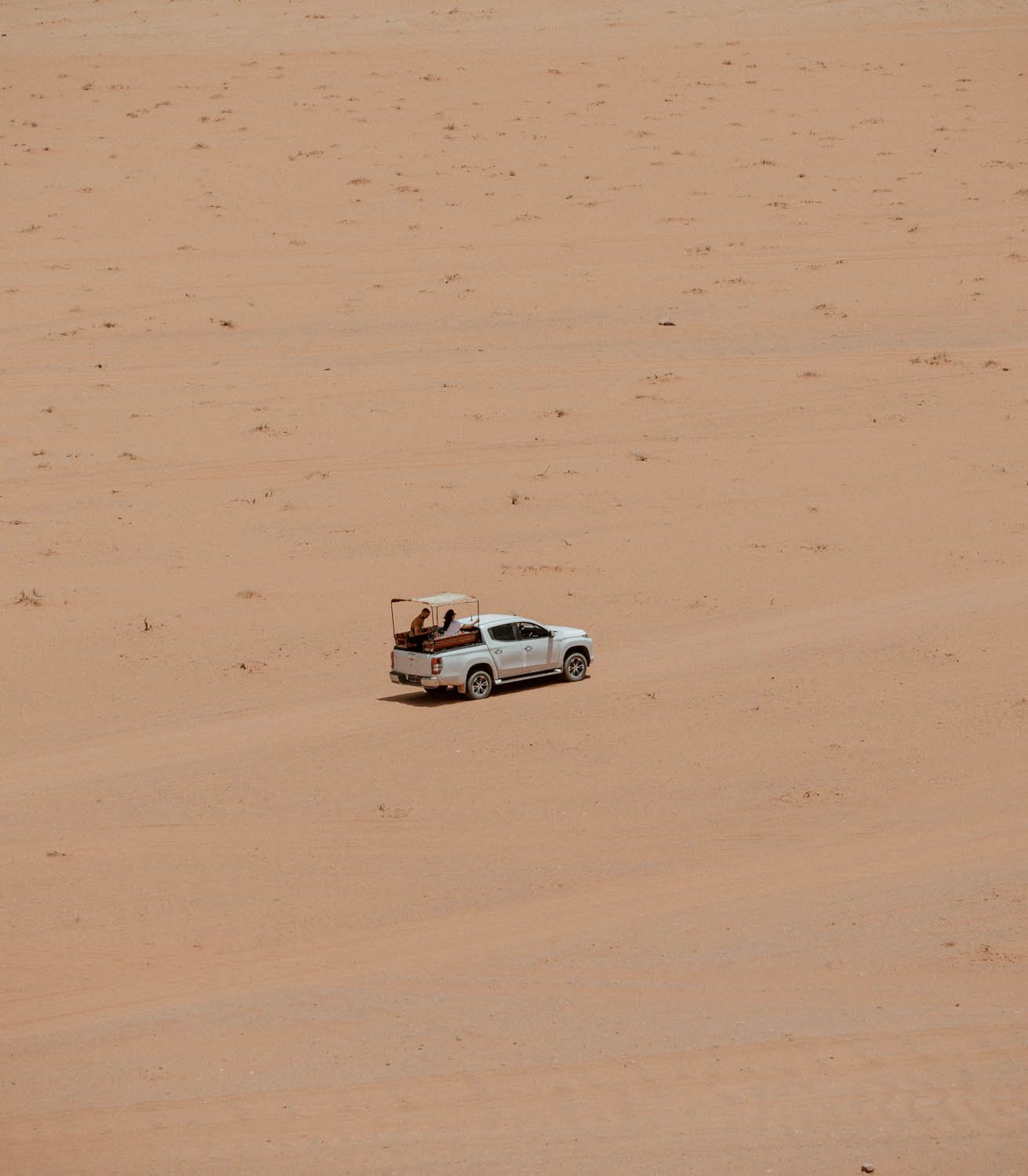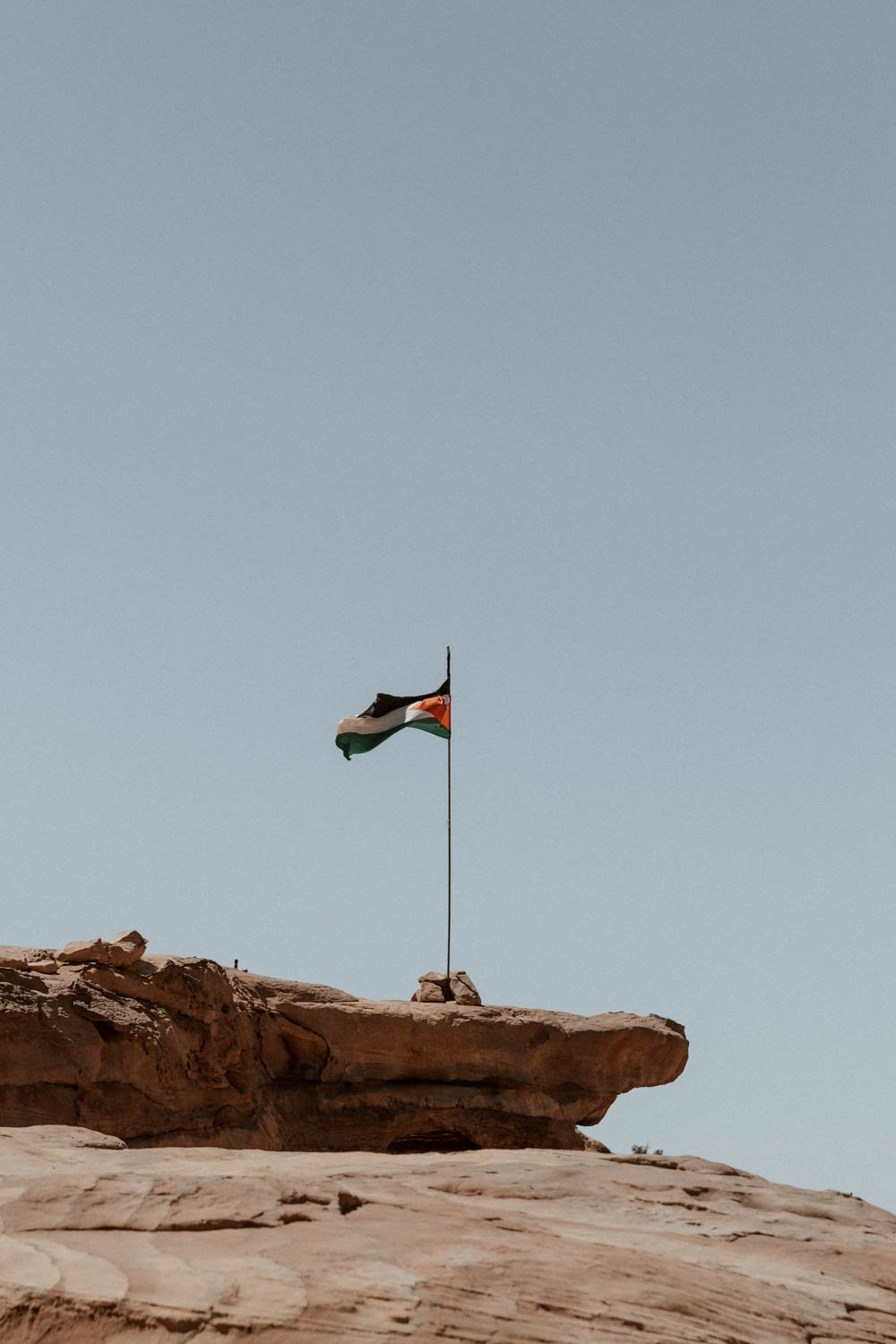Thinking of renting a car in Jordan?
After our two-week road trip, this article has all the important things to know before you book and head out driving in this Middle Eastern treasure.
You know the phrase ‘there’s going to be a few bumps in the road’?
Usually, that’s a hint that things won’t progress quite as smoothly as initially hoped. There will be progress, sure, but you may have a few snags, slowing disappointments or unexpected obstacles along the way.
Driving in Jordan sort of flips all that on its head: the bumps are expected, numerous, and - ironically - fundamental to your journey.
If you’ve never sworn before at the sight of a speed bump, you’ll be screaming bloody murder at them by the time you’ve finished driving in Jordan.
The Middle Eastern country is perfectly set up for a road trip: compact, accessible, well-connected by three north-south highways, not totally wild when it comes to driving etiquette, and with some of the most breathtaking switchback valley roads we've ever driven.
Driving in Jordan will elevate your travel experience on, beyond, and away from the well-trodden tourist trail.
Whether it’s just for a few days or closer to a couple weeks, we highly recommend it as the best way for independent travellers to get around here.
After our own experiences of driving from Amman down to the Red Sea, then all the way back up via Petra, Wadi Rum, Madaba, and Jerash, we feel like we're in a pretty decent position to give you honest insights and advice about whether you will really need to rent a car in Jordan for your own travel style and itinerary, as well as surefire ways to save you quite a lot of money.
Alongside that, we also wanted to share essential tips and genuine insights about the driving experience you can expect which, you'll be happy to know, isn't anywhere nearly as nerve-jangling as you may think (despite multiple police check points, ubiquitous speed bumps, cracked tarmac, and the odd runaway camel to contend with).
Finally, we’ve shared some of our most epic roads and viewpoints to put in your map - ones which only those who choose to embark on a road trip here will really be able to enjoy.
This our essential guide to renting a car + driving in Jordan.
Jordan driving essentials
// Drive on the right hand side
// Must be 21+ to rent
// Cheapest to rent in Amman
// Pick the right highway
// Military checkpoints + unexpected hazards
// A ridiculous number of speed bumps
// Look + book via Rentalcars.com and AutoEurope
Do You Really Need To Rent A Car in Jordan?
In short, it won’t be necessary for all of you to get your own wheels but for many of you it will be essential.
As we explain more in 23 Things To Know Before You Visit Jordan (published soon, we promise!), the country is ideally set up for road trips and small-group tours but not a good fit for independent travellers hoping to get around on public transport (unlike many countries in Latin America, Europe, or Asia). There are no trains and the bus / van network, though good value, is sporadic, unreliable, slow and has very limited departures and connections. By all means go for it if you’re on a strict budget or would like to have that more immersive experience, but just note that the limited daily departures will mean you need to be more organised and less spontaneous when planning your route. You’ll also have to rely primarily on taxis or tours for day trips due to a lack of connections.
If you’re only there for a handful of days, and your Jordan itinerary focuses on visiting the highlights of the country, then you will absolutely be able to rely on a combination of tours, taxis, and private drivers for transport to and between everything on your list.
For example, there are numerous multi-day tours which will take you to the Dead, Petra, and Wadi Rum across two or three days.
However, if you wish to have independence, flexibility, explore further afield, or have an overall quiet different experience of travelling here, then opting for a rental car in Jordan makes most sense. For couples or groups who plan to be in the country for 5+ days, then we think it’s the best option.
Renting a car will, in most cases, save you money overall too.
Note that you have to be over 21 years old and have held you licence for a year to be able get a rental car in Jordan.
Travel Tips // The most convenient way to quickly get a gauge on general availability and prices for your own travel dates is doing a search on Rentalcars.com and AutoEurope, which aggregate and list most of the local companies as well as the main international brands. We always look + book via them for our rentals.
We also recommend having a read of this post before you book to save stress and money: 9 Essential Car Rental Tips for Travellers.
The Driving Distances Are Ideal
Road trips cease to be fun when the sole purpose most days is to eat up the miles.
Thankfully, a sensible Jordan road trip itinerary won’t see you covering more than 250 kms in a single day, with most days seeing you drive significantly less than that distance.
We’ve included some typical routes and drive times below so you have an idea what to expect:
Amman to Jerash | 1 hour / 52 kms
Amman to Dead Sea | 1 hour / 54 kms
Petra to Wadi Rum | 2.5 hours / 112km
Aqaba to Petra | 2.5 hours / 130km
Amman to Petra | 3.5 hours / 230 km
The above uses the quickest north-south highway routes, which we explain further below. When plotting out your distances for Jordon on Google Maps, we’d recommend adding an extra fifteen minutes travel time for every hour of its estimates to give yourself a more realistic estimate i.e. if it says the journey is 2 hours, expect it to take 2.5 hours.
Plan Ahead // Get yourself sort with Our Definitive Guide to Visiting Petra.
ANTICIPATE Those Speed Bumps
Right, we aren’t obsessed, we promise.
Before we set out on our two-week road trip in Jordan, we asked our lovely Instagram followers for advice, and an inordinate number of them mentioned speed bumps.
We thought that seemed a little esoteric, perhaps a little bit of an overreaction. How many speed bumps could there be, and were they that much of an issue?
Surely a few bumps here and there couldn't be that annoying.
Oh, how wrong we were.
Fast-forward 1,350 kilometres and ten days, where we were so incredulously exasperated at the expected unexpected presence of yet another sleeping policeman in the most random or seemingly inappropriate place that we’d curse both the road and the gods in unison.
There are, quite frankly, a lot of speed bumps in Jordan.
They are sometimes indicated with a sign on the right hand side, sometimes not. They’re often impossible to see as the red top layer has faded black under the harsh sun. They’re usually at the beginning + end of towns, before a roundabout, and some intersections. However, they can just as easily appear from nowhere in the middle of a busy highway or without reason on a remote desert road.
Emily would have to point them out sometimes, or we'd simply not expect one and fly over (at a legal speed might I add) like the Dukes of Hazzard. Other times, we’d have to brake suddenly due to the car in front having to brake suddenly, or vice-versa.
We fully understand and appreciate the necessity of speed bumps to slow down drivers and improve safety, but the sheer number of them on the country’s roads and in some very unexpected places on highways, actually feels like it increases the chances of an accident occurring sometimes.
You have been warned.
You Should Rent Your Car At Amman Airport…
The majority of you reading this will be flying into Amman’s Queen Alia International Airport, and it’s the most convenient place to collect your rental car.
It’s also the cheapest.
Based 35km outside the capital city, it’s got several international rental car companies with 24-hour desks located inside the terminal. There are also a selection of local hire companies dotted along the highway outside, but they require a shuttle or meet & greet service.
We booked our vehicle with Avis via Rentalcars.com, as it gave a cheaper rate than booking directly (£349.30 for ten days in May, with standard insurance and unlimited mileage included, instead of £396 on the Avis website).
If you’re flying into Aqaba’s King Hussein International Airport in the south of the country, you will get similar prices to Amman, but may see steep increases in September-November when there’s a surge in European flights to and from the city.
There are little to no options for ‘spontaneous’ rentals outside these two primary entry / exit points, so you’re best to book + collect your car in advance at either before heading on to the tourism hubs of the Dead Sea, Wadi Musa (by Petra), and Wadi Rum.
Nervous about renting a car? We’ve shared more general advice - plus other things to do whenever you collect a rental car to save and reduce stress - in our essential car rental tips for travellers.
Tip // If coming from the UK, you may be booked on one of the two London - Amman flights, which stupidly arrive at around the same time after midnight. If that’s the case, you can still collect a rental car at the airport from one of the companies with 24-hour desks in the terminal, but we would not recommend aiming to drive any further that night than the nearby town of Madaba.
If you know your travel dates, we recommend doing a search on Rentalcars.com in the first instance to get an idea of availability and prices for your budget.
…But Avoid Driving in Amman
On our travels, we often skip driving in big cities because 1. there's no point 2. it's stressful and 3. you're wasting the car rental money if you're not using the car.
For our two-week Jordan itinerary, we decided it was most convenient to get a taxi from the airport to the capital (there’s also a bus), spend a few days exploring it, before heading back to the airport to pick up the car and head south. That may seem a little convoluted, and may not be feasible for those short on time, but we preferred to visit Amman without having to drive in/out of it.
Even if you don’t visit Amman, you may still have to drive along its busy outskirts once or twice, and this was the most chaotic and stressful part of our experience of driving in Jordan (especially at night). It was manageable but it’s best avoided.
(note that the airport is far outside the city, so you don’t need to navigate it busiest parts when picking up your rental car to go north or south).
So, here are the best options to shape your Jordan driving experience around Amman:
1. Arrive in Amman, take a bus, taxi, or private transfer into the city for a night or two. Then head back to the airport to pick up your rental.
2. Arrive in Amman, pick up your rental car and do the easy 30-minute drive to Madaba as your first base. From there, you can even head into Amman on a day trip.
3. Arrive in Amman, pick up your rental car and immediately head north, south, or to Madaba, saving Amman for later in your trip and once you’ve got to better grips with driving in Jordan.
4. Skip Amman entirely.
5. Arrive, drive, and embrace the stress and confusion of driving in the capital (we don’t recommend this one).
We really enjoyed our time in the city (sans voiture), and you can make your own informed decision about where to visit after reading 11 Wonderful Things To Do In Amman.
Travel Tip // If you would prefer to have driving day trips from one base in northern Jordan, rather than moving accommodation every couple of nights, the city of Madaba is your best option.
Look Out For Goats and Camels, Seriously
Not long after we joined the King’s Highway, we were confronted by a runaway camel.
Snaking our way up the sumptuous switchbacks between the Dead Sea and Madaba, we were surrounded by a sea of goats.
Shepherds were herding, or chasing them down, on each occasion, but they weren’t isolated experiences. Goats on the road were a daily occurrence, and we drove parallel to several camels once we headed off the busiest roads.
Keep an eye out and for them and enjoy the moment, but keep your wits about you too: these are valuable animals to their owners and any accident would cause a big dispute. Local drivers tend not to slow down as much as visitors, but we found slowing, putting the hazards on, and either waiting until the shepherd had parted them or there was a clear gap for us to go through, was a sensible approach.
A more prevalent risk when driving in Jordan though are the young children playing at the side of the road, or crossing over in a bit of an unsafe way in small towns. Sometimes they seem perilously close or cross over when it’s not really safe to do so, therefore you’ve got to anticipate it a little. Same goes for families picnicking at the side of busy roads on Saturdays.
Not something to make you paranoid, but just a ‘hazard’ which you won’t necessarily be used to at home and so have to anticipate differently,
In Jordan, a driver is always considered guilty if they hit a pedestrian.
Scam alert // We read reports saying kids may threaten to hurl stones at your car on certain remote parts of the King’s Highway unless you pay them not to. It’s a pretty ingenious grift, but we didn’t see, hear, or experience this.
Choose Your Highways Carefully
The majority of your driving in Jordan will be done on the three north-south roads which connect most of the places that’ll feature on your itinerary.
Even if you want to be intrepid, you’ll still spend a lot of your time going north or south on a combination of these, and it makes navigating Jordan more straightforward and efficient than you may anticipate; on no given day on the average itinerary will you be faced with unrealistic, long driving days.
We’ve summarised the three roads below:
The King’s Highway | Also known as Highway 35, but that’s a bit of a misnomer in the modern context.
It starts at the Ar Rajif intersection with the Desert Highway (Google Maps) , and heads north via Wadi Musa (Petra), the Wadi Mujib Dam, and Madaba, before being absorbed into the ring roads of Amman 280km later.
This slow, historic trading road is often talked about as one of the best things to do in Jordan (published soon), but we think there are some necessary caveats on when you should actually make a point of travelling along it, and discuss it further in the next section.
The Jordan Valley Highway | Also known as the Dead Sea Highway or Route 65, this road runs parallel to the border with Israel and Palestine. Total distance is approx 430 kms from Irbid down to Aqaba, but you’ll likely only drive a small portion of it when going to float in the Dead Sea and canyon in Wadi Mujib.
It’s quick and in pretty good condition.
The Desert Highway | Also known as Highway 15, it starts just south of Amman and runs for just over 300 kms down to Aqaba and the Red Sea. As the name suggests, you hit some stunning scenery along the way, and it’s the quickest option to travel from Amman airport down to Wadi Musa (for visiting Petra), the Wadi Rum desert, and the dive schools of Aqaba.
It’s quick but not in great condition on several stretches, with lots of cracks and potholes. It also has a steady flow of large shipping container lorries due to Aqaba being the principal sea port.
Don't Miss The King's Road...If You Have Time
This ancient trading route stretching across the Biblical lands of the Middle East and beyond is “as legendary and evocative as the Silk Road”. The best article we read about its significance and romance was in the Financial Times, and we highly recommend taking a look: The King’s Highway: Jordan’s ancient artery of civilisation (it may be behind a paywall).
It leads in and out of several STUNNING dry valleys via S-bend roads - some of the most impressive to drive in Jordan - and links up notable stops such as Wadi Musa, Shobak Castle, the Dana Nature Reserve, Karak Castle, the ‘Grand Canyon’ of Jordan, and the popular historic town of Madaba.
With history, landscapes, and a practical purpose, it could be awfully tempting to base a lot of your Jordan road trip around it.
As we had read such glowing things about the Highway prior to our trip from all manner of sources, we made a point of driving all the way along it from the southern startpoint.
Partly for fun, partly for curiosity, partly so we could give you an informed view.
From that experience, we think the romance and historical importace of the King’s Highway may sometimes leave the realities left unsaid for the modern day explorer.
We’re all for meandering around random roads, towns, and countryside when we’re on a road trip (as important an ingredient as the big tourist draws), but a majority of the route is through non-descript parts and subject to slower overall speed limits. This, alongside the narrower road layout, means it takes significantly longer to get from A to B than i) Google Maps says and ii) the Desert and Dead Sea Highways.
It is 100% worth including sections of the King’s Highways on your road trip, but only if you have the time and / or can break up the journey with an overnight; it’s not one you will be able to rush through or make up miles quickly if falling behind.
Alternatively, just make sure you set off early enough in the day so you’re able to comfortably cover the distance, savour your time at each stop-off, and enjoy the unparalleled driving experience you’ll have in and out of the valley dips.
Avoid Google Maps + GPS Mistakes
As the multi-lane Desert and Dead Sea Highways are so much quicker and direct, Google Maps (or your alternative GPS) will often redirect you to or via them when planning out your routes along the King’s Highway.
For example, from Wadi Musa to Karak Castle, the shortest way is via the King’s Highway (139kms), but the quickest way is to head east in the wrong direction to join Highway 15, then cutting west back into Karak (193km).
Therefore, if you’re hoping to travel via the King’s Highway to go north or south for longer distances, you’ll have to overrule the GPS or manually plot it to follow your desired route.
Crucially, and often left unsaid, the other two Highways also have interesting snapshots of daily life and STUNNING scenery of their own (we'll never forget the descent toward Wadi Rum + Aqaba, with the barren desert monuments of a dried up sea ahead of us). So, if you’re only driving in Jordan for a few days rather than a week, it may behove you to make better strategic use of the Highways for journeys which are strictly A to B.
Tip // These days, you don’t need to bother with hiring a GPS device. Most rental cars now have an in-built one or you can simply go for an offline navigation map like Google Maps, Maps.Me or Waze. Alternatively, pick up a local SIM card before you set off and Bob’s your uncle!
Find out more tips on this, and other guaranteed ways to save money on car rental and insurance, in this post: 9 Essential Car Rental Tips for Travellers.
Understand How Police + Army Checkpoints Work
As discussed further in 23 Things To Know Before You Visit Jordan (published soon), the country borders several countries where there is ongoing conflict, military occupation, human displacement, or political concerns.
Due to this, and ongoing security concerns in Jordan and the Middle East, there is a visible military presence throughout the country in the form of military checkpoints. These are quite common on the approach to tourist hubs and strategic assets: the road down to Wadi Musa; across the Dam in the Wadi Mujib valley; at the Wadi Rum junction; just before entering Aqaba; and at the entrance to Amman Airport.
For most visitors driving in Jordan, the checkpoints do not pose an issue, but you will have to navigate them in a certain way. They may also look quite intimidating, with a collection of soldiers in uniform, guns, and sometimes an armoured vehicle or two.
Some of the checkpoints will be set-up in such a way where a stop at it is mandatory, whilst others will simply be at the side of the road and the official will either wave you on, call you in to stop, or ignore you.
We had no issues with them, and were stopped at less than half we saw. When stopped, we were waved on quickly without questions, or asked where we're from and our names on occasion, with the driving licence looked at once or twice. We were never asked to exit the vehicle.
The personnel were always polite and respectful, often ending the brief interaction with the ubiquitous ‘welcome to Jordan’.
We recommend that, whenever you see a checkpoint on your side of the road, you always slow down on approach, wait until waved on, and be courteous / smile. You should have your driving licence somewhere easily accessible for these stops, as well as as the little white licence which accompanies your rental car.
Travel Tip // Jordan rental car companies will not permit you to take your car over the border, but we’d also recommend not driving anywhere near these borders anyway due to the security levels.
Stop For Coffees + Lunch in Random Places
As we mention in 23 Things To Know Before You Visit Jordan, travelling here can sometimes feel like you're simply on a tourist trail with everyone doing the same things and visiting the same places.
Striking out on your own with a road trip is the surefire way to to add some bespoke serendipity to your experience.
We made a few pits stops for a drink or snack part of our daily driving ritual, whether we needed a hit of syrupy coffee or not, because it always meant we’d have a memorable interaction or gain a small insight. We know it’s a travel cliché to venerate each and every local, but every random stop saw us given a warm, friendly welcome (as well as seeing us entertainingly ripped off once).
There was coffee shared with a toothless master of the long con, the best falafel of the trip from the devout brothers, and an introduction to the camel baron with fourteen children. Brief interactions that may seem a little meaningless on the face of it, but mean everything to a traveller in a foreign land.
So, take advantage of spontaneous stops in the middle of nowhere or at places more used to serving truck drivers than tourist buses. Selfishly, it adds more to your experience, but it does also help to spread the tourism spend into the pockets of those who aren’t used to it.
Note that there aren’t large, generic roadside rest stop areas like you see elsewhere in the world, with the majority being small, modest, and independently run. If you need a toilet stop, petrol stations are sometimes the best idea, and you may drive a while before seeing anywhere that serves food (rather than snacks). If you see a cluster of buildings by the road side, then that’s usually your best option for a good half hour or longer on the Highways.
Tip // When driving in Jordan, you may see kids or men flapping a silver sheet or tray at the side of the road. The purpose isn’t to blind you with the reflecting sun, but rather to try and get you to stop at their stall or restaurant.
Fuels Stations & Filling Up
In our experience, all petrol stations employ attendants, and they will fill up the car for customers; we never saw or had the option to fill up on our own. You’ll need to just pop the fuel cover for them, and possibly remove the fuel cap with your key (though they often do this for you).
Every fuel station we went to accepted payment by card, but we’d recommend always having a bit of cash on your person just in case. When paying by card, the attendants always added 200 piastres (approx 25p) to the total cost as a tip. From conversations, we understand the tip is also expected if paying in cash (though it can be a bit difficult to work out with the coins, and I’m still not sure if it’s expected or not).
'Full' is always understood, but if you only want a specific value and you're not too hot on your numbers in Arabic, it's best to just show a 10 or 20 JD note. We even filled up as low as 5JD with our card the night before returning it to the rental company in Amman (heaven forbid Andrew returns it with one drop more fuel than they provided us), which the attendant found equally funny and ridiculous.
When collecting your rental car in Jordan, confirm the type of fuel before you set off to avoid mistakes at the pumps. In Jordan specifically, that doesn’t just refer to petrol and diesel, as there are helpfully two types of petrol in Jordan: Unleaded 90 and 95, and our car rental guy told us to specifically fill up with the 90.
The English is generally on the signs and pumps, and understood by the attendants, but ‘benzina’ is the word to use in Arabic.
We did read about a scam where the driver pretends to misunderstand how much fuel you want or adds quite a bit to the price through some pump action skullduggery , but we didn’t personally experience this. We’d recommend standing by them when filling up anyway, and to just keep an eye on the numbers.
Travel Tip // Fuel stations are fairly frequent in and around the towns and cities, with a reasonable number dotted along the highways. Our rule of thumb on road trips is to avoid going under half a tank unless you know you’re staying firmly on the beaten track, and in Jordan we’d specifically recommend topping up before driving to the Dead Sea and Wadi Mujib. There are a couple of stations at either end, but the driving distance is further than it looks and, if driving from Madaba, you will cover more miles than you think before being able to fuel up.
It's Not As Chaotic As You May Think
Road trips in Sicily and Morocco definitely provided more challenging driving environments, bewildering habits and unwritten rules than Jordan.
Outside of the Amman’s traffic, we found most to be respectful and courteous on the road, not too liberal on the horn, and generally displaying conduct which one would call rational and sensible on the roads.
It really wasn’t that stressful for the most part, and verged on the pleasant a lot of the time.
One chap was kind enough to let us know on the first day that our licence place was hanging off, resulting in a hasty repair job with elastoplast which miraculously lasted until we returned it to the airport ten days later. We also have to give a shout out to a wonderful guy in Aqaba who helped us out with an unexpected flat battery when our car was parked in a very inaccessible position for him and his friend.
It was on the highways where a few more quirks and challenges of Jordanian driving become apparent: the hogging of two lanes by a single car, the creation of three lanes when there's only meant to be two, the disregard for the sanctity of any lane line, cutting you off or swinging in front with no warning (quite dangerously), merging when it’s foolish to do so, jockeying for position at close proximity, and some aggressive, high-speed tailgating on occasion.
If you see an indicator being used in any circumstance but the most necessary, then you can place all your money on it being another rental car in front.
Driving in Jordan is therefore something for you to adjust to cautiously over the first day or two, but not something to be too fearful of.
Travel Tip // Despite this, we recommend avoid driving at night if you can. Not only do you miss out on some spectacular scenery, but it will increase the stress and chances of a mishap (and make those pesky speed bumps even more annoying). We did have to do a few hours’ night driving on two occassions because of the King’s Highway setting us back quite a bit and oversavouring sunset at the Dead Sea; though it was absolutely fine, it’s not something you’ll want to do unless absolutely necessary.
Be A Responsible Driver
Once you’ve gently eased yourself into the different driving environment, and learned to accommodate or anticipate its quirks better, you may find yourself tempted to cast off everything you’ve learned over your preceding years behind the wheel and go native.
We don’t recommend this.
Although Andrew now thinks he drives like a Sicilian whenever he’s in Italy after lots of road trips there, it’s important you don’t lean too far into local practices when driving in Jordan. Sure, your driving may have to adapt a little to the circumstances, but your safest option is to stick with what you know best on the road.
Further, as a visitor fortunate enough to be travelling around the country, it’s paramount to respect the rules of the road and not jeapardise others. Helpfully, roads signs are almost always in Arabic and English, and you should always:
· Respect speed limits (even though they can fluctuate quite confusingly).
· Anticipate and slow down for those speed bumps and check points.
· Use your indicators.
· Be aware of pedestrians and livestock on or right by the side of the road.
· Respect those lane markers and maintain a safe distance between vehicles.
· Wear your seat belt.
· Don’t drink and drive - as we explain in 23 Things To Know Before You Visit Jordan, the country isn’t quite ‘dry’, but you shouldn’t consume before you get behind the wheel.
· Don’t drive tired - for inexperienced road-trippers, this is almost as big a risk as anything else, so don’t be scared to take a break if required.
· On all highways it can sometimes be a bit unclear when an extra lane has started / ended and which side of the road is entitled to the extra one - proceed cautiously and follow what the other drivers do.
As the public transport network isn’t great in Jordan, you’ll also see a lot of local hitchhikers by the side of highways. This can be a couple of male workers, police academy students, a group of women, or a large family - we had a full car so didn’t pick anyone up, but if you feel safe and comfortable doing it and not travelling alone, then a lift up the road may help someone out a lot and lead to a lovely interaction!
One last note on speed. Limits are clearly indicated, and the plethora of speed bumps also act as a de-facto speed limit too. Typical limits are 120 km/h on the highways, 80 km/h on rural roads and around 40-60km/h in cities or built-up areas. There aren’t lots of speed cameras around, but there are often police hand-held speed gun checks permanently or temporarily set up around the country (we passed about six or seven, all indicated in advance by several red ‘control speed’ signs).
Parking for Your Wadi Rum Experience
A big point of uncertainty for us was what to do with the car whilst we had our two-night desert camp experience in Wadi Rum.
We knew we couldn’t drive our rental car through the desert, but were primarily concerned with security and accessibility. Just how far could we get into the desert and then what would happen with it?
Thankfully, the solution is free and easy, with just a bit of co-ordination required. Simply drive toward Wadi Rum Rest House (Google Maps) in the village, where you can park and leave the car for free in a (relatively) secure spot for as many nights you’re at your camp. From there, your camp guide will arrange pick-up if you’ve arranged ahead of arrival. We recommend not leaving anything of significant value or importance in the car though, just to be on the safe side.
As an aside, if you do hope to drive independently around Wadi Rum, you’ll need a 4x4, experience, and a bit of daredevil attitude. 99.9% of you shouldn’t even consider this as 1) you won’t have a suitable vehicle, 2) you’ll wreck your rental car, 3) you’ll get lost, 4) you’ll get stuck in the sand and 5) you’ll get lost, stuck, and wreck your car. Therefore, you’ll be better off sticking with a Bedouin and his beaten up Toyota Landcruiser to make the most of the experience.
Find out more in our Wadi Rum guide.
Parking in Jordan is generally free on streets, unless otherwise indicated or not permitted. If your accommodation doesn’t have a private parking area or on-street parking outside, then there will usually be somewhere nearby - if unsure, we recommend contacting them ahead of arrival for advice.
We’ve included more specific advice on parking in our destination guides the Dead Sea, Wadi Mujib, Petra, and the Jerash ruins. There is a parking scam going on around Karak Castle though.
U-Turn If You Want To
The strangest part of driving in Jordan, beyond the camel hazards and a goat staring into your soul as you wait for it to move, was the amount of u-turns we'd make.
These are legal but pretty rare in the UK, but they’re positively encouraged, sign-posted and, on occassion, traffic-lighted in Jordan.
We’d say they’re way more common than roundabouts.
Hot, Hot, Heat and Burning Rubber
Our rental car and many others had a weird sticky substance on the tires, and it didn't take long driving from Amman down to Aqaba along the Desert Highway to realise this may be because of the heat generated from hot rubber on hot tarmac in this very hot country. We’ve never seen so many remnants of tire blowouts anywhere, and the parts of the desert were a veritable black rubber graveyard.
We’re not big car people, so this may be a completely inaccurate correlation rather than causation (subsequent research makes us think that it was ‘tire shine’ on the rubber), but we wanted to wrap this point in with a reminder about the effects of driving in such constant heat.
Use your air-con (with your windows shut) to keep cool, have a bottle of water for journeys, and try to park in a shaded area when you’re out exploring to prevent the car heating up to crazy levels (not always possible).
Bring The Right Documents + A Credit Card
In terms of documentation for driving in Jordan as a visitor, you’ll require a valid driving licence and should have held it for at least one year. A passport will also usually be asked for at the rental desk.
There is a lot of contradictory information online about the minimum age to rent in the country, but the consensus amongst rental companies seems to be that you need to be at least 21 to rent a car in Jordan. Some do mention 22, and it’s likely that drivers aged 25 or under will be charged more for renting (a standard practise globally). If uncertain on age, we recommend reading the small print before you rent or clarifying with the company well in advance of travel.
All car rental companies should provide you with the necessary paperwork and documents for driving in Jordan, and it’s a good idea to store these safely together in the glove compartment.
An International Driving Permit IS a stated requirement for most nationalities in order to legally drive in Jordan, but it won’t necessarily be asked for every car rental desk (ours didn’t). However, to avoid disappointment and potential last-minute rebooking at inflated costs, we strongly recommend bringing one with you to Jordan (you can’t get one there).
Finally, you must bring a valid credit card in the driver’s name for your Jordan rental car deposit. This is an area which confuses a lot of renters when collecting your car and, go to any Jordan car rental company reviews on Google, especially for the cheaper local companies, and you’ll find people confusing why they’ve had a chunky deposit taken when collecting their car and their insurance coverage.
They’re not the same thing.
In short, to rent any car you’re always going to be required to have a deposit ‘held’ or ‘blocked’ on your credit card. This is to cover various rental risks (i.e. you nicking the car) as well as give the company certainty that you’ve got the funds to cover the excess or any other charges. The amount is detailed transparently when booking, but the amount varies from company to company; you should expect it to be above £500 but it can reach upwards of £1,000.
This amount is ‘blocked off’, not taken, from your bank account and will be returned in full if the car is returned with no damage or disputes; in that event, the amount is ‘released’ several after working days. If there is a charge (for example, you return the tank empty), the charge is taken off the amount before it’s returned to you.
We’ve explained this and insurance / excesses in more detail in our essential car rental tips for travellers post, but it’s such a common area of dispute and misunderstanding, that we wanted to bring it to your attention here too.
The best advice? Always have a credit card to cover this as many companies will not accept debit cards or cash for the deposit, and check your bank statement a week or two after drop-off to make sure the money has been unblocked. Ensure that your credit card also has an adequate limit available to allow the deposit to be ‘blocked off’.
Put These Roads In Your MAP
We’ve already gone deep into the detail of driving in Jordan, so we promise to wrap up this post with a few recommendations. We may have a thing for switchback roads by the way…
The Moujib Valley (maps) | On the King’s Highway, the roads leading to and from this viewpoint traverse the Mujib Dam in a stunning valley drive of switchbacks. Stop off at the panorama viewpoint for coffee or sunset.
Shqira (maps) | Another valley section of the King’s Highway, with nothing but dust, a few Bedouin camps under the harsh sun, and impressive scenery.
Madaba to Dead Sea (maps) | The twisting descents of the Ma’in Valley and to/from Mount Nebo are all special, and we even drove one stretch three times as it was so breathtaking.
The firs time the road arrives to the red desert and monoliths of Wadi Rum.
Ready To Go? Look + book via Rentalcars.com or AutoEurope to get the best deal on your car, or check out the rest of our Jordan travel blog series below to keep planning!
Where to Next?
The Perfect Jordan Road Trip Itinerary
A Definitive Guide To Visiting Petra
11 Wonderful Things To Do in Amman
16 Really Useful Things to Know Before You Visit Amman
A Guide to Canyoning in Wadi Mujib
How to Get From Amman Airport to Amman
A Guide to Visiting the Jerash Ruins



